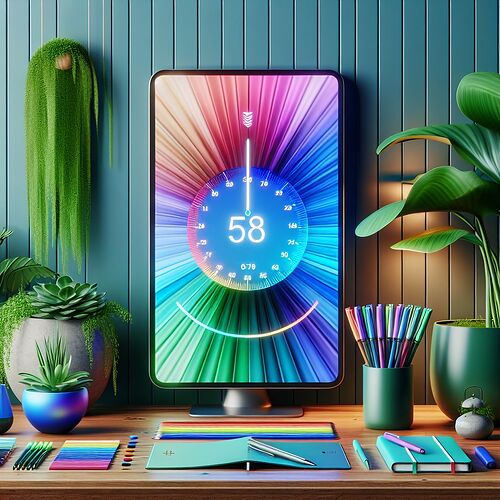How to Use Visual Timers for Better Focus
Visual timers are powerful tools that can help individuals maintain focus and manage their time more effectively. They are especially useful for those who struggle with time management or have attention difficulties. This guide will explain how to use visual timers to enhance your focus and productivity.
1. Understand What a Visual Timer Is
A visual timer is a device that visually represents the passage of time. Unlike traditional clocks, visual timers often use colors, shapes, or other visual cues to indicate how much time has passed and how much is remaining.
Example
For instance, a visual timer might start with a full red circle that gradually shrinks as time passes, eventually disappearing when the time is up.
2. Choose the Right Visual Timer for Your Needs
There are various types of visual timers available, including:
- Analog Visual Timers: These timers typically have a colored disk that moves as time passes.
- Digital Visual Timers: These timers may use a digital display with visual cues, such as changing colors or bars.
- App-Based Visual Timers: These are digital timers available on smartphones or tablets, offering customizable visual features.
Example
If you prefer a physical timer, an analog visual timer with a red disk might be ideal. If you are tech-savvy, an app-based timer with customizable features might suit you better.
3. Set Clear Goals and Time Limits
Before using a visual timer, it’s important to set clear goals and time limits for your tasks. This helps you stay focused and ensures that you are using your time effectively.
Example
For example, if you need to study for an hour, set your visual timer for 60 minutes and aim to complete a specific chapter or topic within that time frame.
4. Use the Timer to Break Tasks into Manageable Chunks
Visual timers are particularly effective for breaking larger tasks into smaller, more manageable chunks. This technique is known as the Pomodoro Technique, where you work for a set period (e.g., 25 minutes) followed by a short break (e.g., 5 minutes).
Example
Set your visual timer for 25 minutes and focus solely on your task during that time. When the timer goes off, take a 5-minute break before starting the next session.
5. Monitor Your Progress
Use the visual timer to monitor your progress and adjust your time management strategies as needed. Reflect on how effectively you used your time and make any necessary adjustments for future tasks.
Example
After completing a task, review how well you stayed focused and whether the time limit was appropriate. If needed, adjust the time for future sessions to better suit your working style.
6. Incorporate Breaks and Rewards
Incorporating breaks and rewards into your schedule can help maintain motivation and prevent burnout. Use the visual timer to schedule regular breaks and reward yourself for completing tasks.
Example
After working for 50 minutes, set your visual timer for a 10-minute break. During this time, relax or do something enjoyable as a reward for your hard work.
Conclusion
Visual timers are effective tools for enhancing focus and productivity. By understanding how to use them and incorporating them into your daily routine, you can manage your time more effectively and achieve your goals with greater ease.
Start experimenting with different types of visual timers and find the one that works best for you. With practice, you'll likely find that your ability to focus and manage your time improves significantly.
Did I miss anything? Add your comments below!
